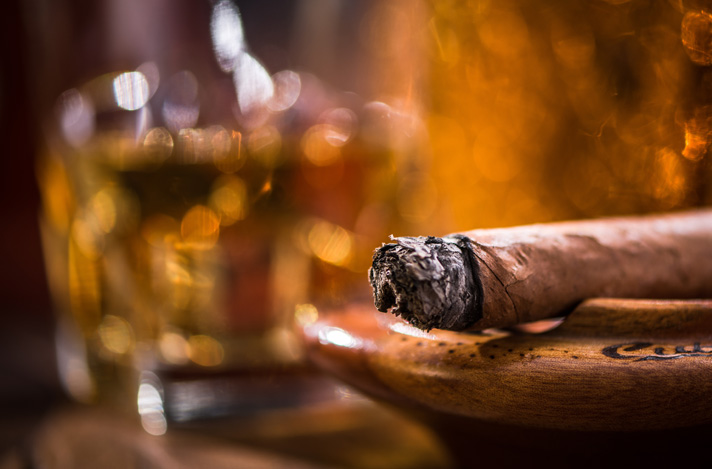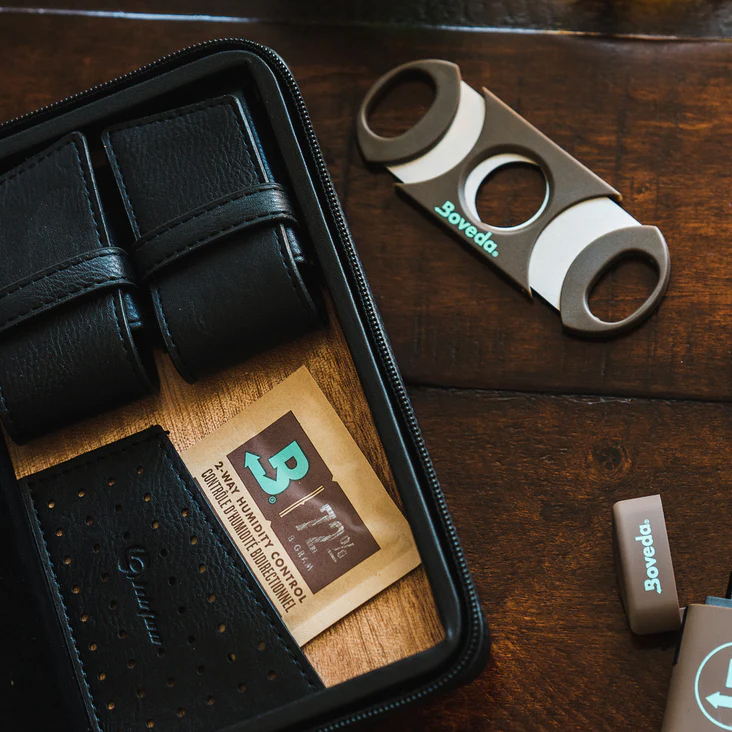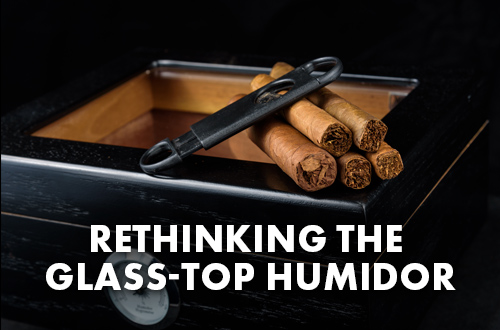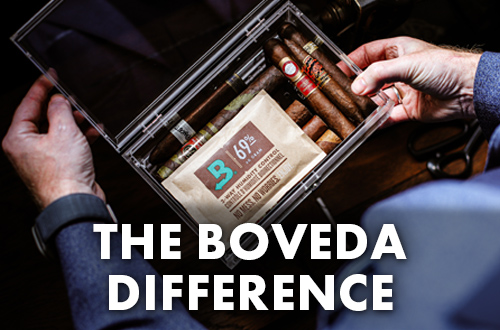
Times do arise that require an avid cigar smoker like yourself to save a cigar to relight later:
- A pressing matter pulls you away—urgent meeting, pulling into the dock, or you just heard the opening bars of “Sweet Caroline” on the wedding dance floor and need to get your “bum, bum, bum” on.
- A large stogie burns far longer than you can handle in a single session, as in the case with some Churchills, Double Coronas, Lanceros, and Gran Coronas.
- The cigar was spendy, and you want to savor it over a couple of smoking sessions—and you simply can’t bring yourself to waste even a third of this fine artisanal product.
Don’t put a cigar on hold for too long, however. “Most aficionados agree that after an extinguished cigar has been sitting for an extended period of time, it is not worth relighting. You will be disappointed in the smoking experience,” said Tim Swail, Executive VP of Sales, Boveda.
So can you save a cigar for later? It’s a question of can or should. Can you relight a cigar after a few hours? Yes. Should you after a few days. No. This article tackles everything you need to know about cigar “leftovers.”

Can You Smoke Half a Cigar and Save the Rest for Later: The Short Answer
Although cigar purists might advise otherwise—you own that cigar and can do whatever the heck you want to with it. If that means smoking your cigar across two or even three sessions, that’s your prerogative.
Can You Save a Cigar for Later: The Long Answer
Is a cigar like a hearty stew—perfectly good, and maybe even better the next day? Or is a cigar like raw sushi—terrible as a leftover two days later, and potentially dangerous to boot?
No pre-lit cigar improves over time. Once it’s lit, its opportunity to improve is gone. It’s now just a matter of “Will that cigar be any good when you relight it?” Remember, the longer it rests, the worse it gets.
What’s Happening Inside a Lit Cigar
When lighting a cigar and smoking, you pull side stream smoke through the unburnt leaves of the cigar body, which leaves behind resins and smoke residue. This resinous, combusted particulate matter (sometimes called tar) interacts with oxygen. Upon a second lighting, the oxygenated residue can be unpleasant. Cigar smokers often describe a re-lit cigar as tasting “stale,” “creosote-like,” “ashy,” and “just plain bad.”
What Cigar Smokers Say About Relighting a Cigar
For this reason, several cigar lovers skirt the issue by recommending alternatives. They say, “instead of asking whether you can save a cigar for later, just buy a smaller cigar to begin with.” Or they hand down firm laws: “it’s better to trash a half-smoked cigar, eat the cost, and smoke a new one later.”
A half-smoked cigar will not taste as good the second time around. At the same time, half-smoked cigars aren’t dangerous like moldy cigars. And they aren’t the absolute worst-tasting thing (despite some hyperbolic claims).
So to re-light or not re-light a cigar? It’s a personal decision weighed against diminishing returns—how much do you value the cigar; how much did you paid for it; how much did you enjoy it; etc.
How to Save a Cigar to Maximize Its Continued Value
You’ve decided, yes, you want to re-smoke that cigar. In this section, find out how to maximize a cigar’s continued value and protect your other cigars, too.
Step 1: Properly Lighting and Cutting
The first step is to cut and light the cigar properly the first time around. Any “canoeing” or cracked wrappers will carry over when you relight a cigar. Use a sharp, dedicated cigar cutter to cleave the cap from the head. Next, rotate the stick as you evenly toast the foot, with the flame roughly a half-inch away, and then gently draw in air from the head.
Watch this step-by-step tutorial on how to light a cigar with a torch lighter, a disposable lighter, wooden match, and cedar spill. Dive deeper in how to properly light a cigar.
Step 2: Extinguishing
The next step is to extinguish the cigar correctly. Extinguishing a cigar by stamping it out can crack the wrapper, dislodge filler, and create off-flavors—not good, if you want to relight that stick.
Instead, gently tap off the existing ash, rest the lit cigar on the ashtray divot (or other perch), and allow the ember to die naturally. This process takes a few minutes. By all means, DO NOT store a once-lit cigar inside a humidor, tupperdor, or humidor bag.

Step 3: Purging and Cutting
Next, “purge” the cigar of stale smoke and residue. Fill your cheeks with air and gently but forcefully blow through the cigar to expel unwanted particulates and oils. It’s best to do this over an ashtray or bin. If seated, take caution not to purge into your own lap (it’s happened before—not pretty!).
Cut the cigar right above the burn line to remove the ashy tip. If you need advice on how and where to cut a cigar, visit the link provided.

Step 4: Purging Again
For good measure, purge the cigar once more before smoking it. Light the cigar again using the best practices listed above, and you’re off to the races.
Will a Half-Smoked Cigar Be as Good the Second Time Around?
No. However, if you follow these steps, you can mitigate the less-attractive qualities of a partially completed cigar, and minimize its impact on your collection.
Keep Cigars From Drying Out with Boveda

Holds up to 5 cigars. Discrete enough to fit in a jacket pocket or crossbody fanny pack.
Shop Now
Use in wood and acrylic humidors or tuppedors. This multi pack is just right for small- to medium-size cigar storage.
Shop Now
Have cigars, will travel with them preserved in perfect humidity for the perfect smoke.
Shop Now
Recut a cigar with a sharp cutter, like this double-blade guillotine Boveda-branded cigar cutter
Shop Now







